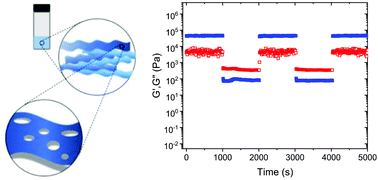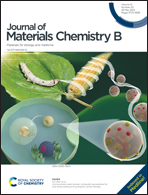Layered supramolecular hydrogels from thioglycosides†
Abstract
Low molecular weight hydrogels are made of small molecules that aggregate via noncovalent interactions. Here, comprehensive characterization of the physical and chemical properties of hydrogels made from thioglycolipids of the disaccharides lactose and cellobiose with simple alkyl chains is reported. While thiolactoside hydrogels are robust, thiocellobioside gels are metastable, precipitating over time into fibrous crystals that can be entangled to create pseudo-hydrogels. Rheology confirms the viscoelastic solid nature of these hydrogels with storage moduli ranging from 10–600 kPa. Additionally, thiolactoside hydrogels are thixotropic which is a desirable property for many potential applications. Freeze-fracture electron microscopy of xerogels shows layers of stacked sheets that are entangled into networks. These structures are unique compared to the fibers or ribbons typically reported for hydrogels. Differential scanning calorimetry provides gel-to-liquid phase transition temperatures ranging from 30 to 80 °C. Prodan fluorescence spectroscopy allows assignment of phase transitions in the gels and other lyotropic phases of high concentration samples. Phase diagrams are estimated for all hydrogels at 1–10 wt% from 5 to ≥ 80 °C. These hydrogels represent a series of interesting materials with unique properties that make them attractive for numerous potential applications.



 Please wait while we load your content...
Please wait while we load your content...